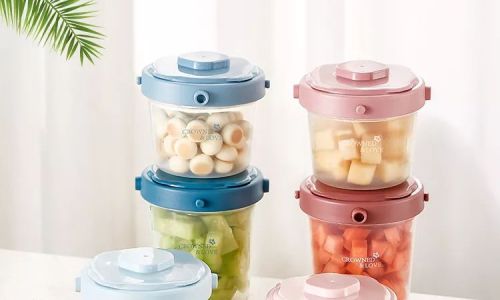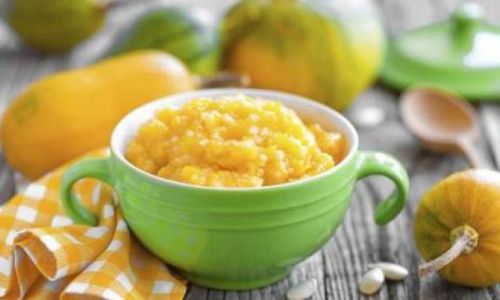Table of content
- 1 Temperature Control: The Golden Rule
- 2 Hygiene Practices
- 3 Storage Time Limits
- 1 Glass Containers
- 2 BPA-Free Plastic Containers
- 3 Silicone Freezer Trays
- 4 Ice Cube Trays (Food-Grade)
- 1 Preparing the Food
- 2 Portioning
- 3 Freezing Techniques
- 1 Thawing Methods
- 2 Reheating Tips
- 1 Travel and On-the-Go Storage
- 2 Batch Cooking
- 3 Allergen Management
Introduction
Preparing homemade baby food is a rewarding way to ensure your little one receives wholesome, nutrient-rich meals. However, the process doesn’t end with cooking and blending—proper storage is equally critical to maintain freshness, nutritional value, and safety. Improper storage can lead to spoilage, bacterial growth, or nutrient degradation, posing health risks to your baby. This guide delves into the science-backed methods, containers, and tips for storing baby food safely, whether you’re a parent juggling a busy schedule or a caregiver prioritizing convenience without compromising quality.
Understanding the Basics of Baby Food Storage
1 Temperature Control: The Golden Rule
Bacteria multiply rapidly between 40°F (4°C) and 140°F (60°C), a range known as the “danger zone.” To prevent contamination:

- Refrigerate promptly: Cool cooked baby food to room temperature (within 2 hours) before storing it in the fridge.
- Freeze for longevity: Freezing halts bacterial growth, extending shelf life significantly.
2 Hygiene Practices
- Wash hands and utensils: Always sanitize surfaces, hands, and tools before handling baby food.
- Avoid cross-contamination: Use separate cutting boards and spoons for raw and cooked ingredients.
3 Storage Time Limits
| Food Type | Refrigerated (≤40°F/4°C) | Frozen (0°F/-18°C) |
|---|---|---|
| Purees (vegetables, fruits) | 2–3 days | 2–3 months |
| Meat/poultry purees | 1–2 days | 1–2 months |
| Dairy-based mixtures | 1 day | Avoid freezing |
| Grain-based meals | 2 days | 1 month |
Note: Homemade baby food lacks preservatives, so adhere strictly to these timelines.
Choosing the Right Containers
1 Glass Containers
- Pros: Non-porous, BPA-free, and oven-safe. Ideal for reheating.
- Cons: Heavy and can break if dropped.
- Best for: Storage of acidic foods (e.g., tomato-based purees) and long-term freezing.
2 BPA-Free Plastic Containers
- Pros: Lightweight, shatterproof, and often designed with portion-sized compartments.
- Cons: May absorb odors/stains over time. Avoid heating in plastic to prevent chemical leaching.
- Best for: Short-term refrigeration and travel.
3 Silicone Freezer Trays
- Pros: Flexible, easy to pop out individual portions, and microwave-safe.
- Cons: Not ideal for liquids (may spill during transfer).
- Best for: Freezing purees into single-serving cubes.
4 Ice Cube Trays (Food-Grade)
- Pros: Affordable and perfect for small portions.
- Cons: Not airtight; transfer to sealed bags after freezing.
- Best for: Quick-freezing small batches.
Step-by-Step Storage Guide
1 Preparing the Food
- Cook thoroughly: Ensure meats and vegetables are fully cooked to kill pathogens.
- Blend to consistency: Adjust texture based on your baby’s age (smooth for 6 months, chunkier for 9+ months).
- Cool efficiently: Place the container in an ice bath to reduce temperature rapidly.
2 Portioning
- Single servings: Use 1–2 tablespoon portions to avoid waste.
- Label clearly: Include the date and food type using waterproof labels or masking tape.
3 Freezing Techniques
- Flat freezing: Lay containers or bags flat in the freezer for even freezing and easy stacking.
- Avoid overfilling: Leave ½-inch headspace in containers to allow expansion.
Thawing and Reheating Safely
1 Thawing Methods
- Refrigerator thawing: Safest method; transfer frozen food to the fridge 12 hours before use.
- Cold water bath: Submerge a sealed bag in cold water, changing the water every 30 minutes.
- Microwave defrosting: Use the “defrost” setting and stir frequently to eliminate hotspots.
Never thaw baby food at room temperature—this promotes bacterial growth.

2 Reheating Tips
- Stovetop: Warm gently in a saucepan over low heat, stirring constantly.
- Microwave: Use a low-power setting and test temperature on your wrist before serving.
- Avoid re-freezing: Once thawed, consume within 24 hours.
Common Mistakes to Avoid
- Refreezing thawed food: This degrades quality and increases contamination risk.
- Using damaged containers: Cracks or scratches can harbor bacteria.
- Ignoring freezer burn: Frosty patches indicate dehydration; discard affected portions.
- Overloading the freezer: Poor airflow causes uneven freezing.
- Storing hot food: Rapid cooling is essential to inhibit bacterial growth.
Special Considerations
1 Travel and On-the-Go Storage
- Use insulated bags with ice packs to keep food chilled for up to 4 hours.
- Opt for squeeze pouches or reusable food pouches for mess-free feeding.
2 Batch Cooking
- Prep a week’s worth of meals in advance using a “cook-freeze-reheat” cycle.
- Invest in a vacuum sealer for extended freezer life (up to 6 months).
3 Allergen Management
- Store allergenic foods (e.g., nuts, dairy) separately to prevent cross-contact.
- Label containers clearly if your baby has food sensitivities.
Creative Hacks for Reducing Waste
- Repurpose leftovers: Add overripe bananas to oatmeal puree or mix leftover veggies into broth.
- Donate unused portions: Local food banks may accept unopened baby food.
- Compost scraps: Peels, stems, and spoiled food can enrich garden soil.
The Role of pH in Storage
Acidic foods (e.g., citrus fruits, tomatoes) have a longer refrigerator shelf life due to their low pH, which inhibits bacterial growth. Conversely, high-protein foods (meat, dairy) spoil faster and require stricter time limits.
When to Discard Baby Food
Trust your senses:

- Smell: Off or sour odors indicate spoilage.
- Sight: Mold, unusual color changes, or liquid separation are red flags.
- Texture: Unusual sliminess or graininess means discard immediately.
Eco-Friendly Storage Solutions
- Reusable silicone bags: Replace single-use plastic wrap.
- Beeswax wraps: Ideal for covering bowls during cooling.
- Mason jars: Durable and recyclable for long-term use.
Conclusion
Mastering baby food storage is a balance of science and practicality. By prioritizing hygiene, using appropriate containers, and adhering to timelines, you can ensure every spoonful is as safe and nutritious as the first. Whether you’re a first-time parent or a seasoned caregiver, these strategies will streamline your routine, reduce waste, and give you peace of mind. Remember, the goal isn’t perfection—it’s consistency in providing your baby with the best start through mindful meal preparation.
Final Tip: Involve your child in the process! Even toddlers can help wash veggies or stir purees, fostering a lifelong love for wholesome food.







0 comments